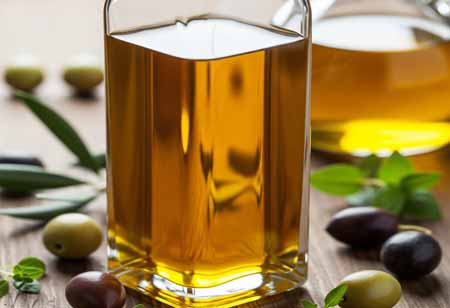Thank you for Subscribing to Food Business Review Weekly Brief
The Science and Strategy of Cooking with Cold-Pressed Olive Oil
Cold-pressed olive oil has evolved into a versatile cooking medium, offering rich flavor and health benefits while meeting consumer demand for nutritious ingredients.

By
Food Business Review | Wednesday, September 10, 2025
Stay ahead of the industry with exclusive feature stories on the top companies, expert insights and the latest news delivered straight to your inbox. Subscribe today.

The culinary landscape has seen a significant evolution in recent years, with a pronounced shift towards ingredients that offer both exceptional flavor and robust nutritional profiles. Within this evolving paradigm, cold-pressed olive oil has emerged as a cornerstone, transcending its traditional role as a finishing oil or salad dressing staple to become a preferred cooking medium across a broad spectrum of culinary applications. This transformation is driven by a deeper understanding of its chemical properties, its performance under heat, and the increasing consumer demand for wholesome, minimally processed food products.
The Science Behind the Sizzle: Why Cold-Pressed Olive Oil Excels in Cooking
The very essence of cold-pressed olive oil lies in its extraction method. Unlike refined oils that undergo high-heat and chemical processing, cold pressing involves a mechanical process of crushing and pressing olives at low temperatures. This gentle approach is crucial for preserving the oil's intrinsic qualities – its vibrant flavor, rich aroma, and a treasure trove of beneficial compounds. These compounds, particularly polyphenols and antioxidants, are sensitive to heat and are retained mainly in the cold-pressed varieties, making them distinct from their refined counterparts.
For a long time, there was a prevalent misconception that cold-pressed olive oil, especially extra virgin varieties, was unsuitable for cooking due to its perceived low smoke point. However, contemporary research and culinary practice have debunked this myth. The smoke point of quality cold-pressed olive oil typically ranges from 350°F to 410°F (176°C to 210°C), a range that comfortably accommodates most common cooking methods. This includes sautéing, shallow frying, baking, roasting, and even grilling. The key lies in understanding that the smoke point is influenced by factors such as the oil's acidity and the presence of impurities. High-quality cold-pressed olive oils, with their low acidity and superior purity, exhibit remarkable stability when heated, resisting oxidation and maintaining their beneficial properties even under sustained cooking temperatures. This stability is further bolstered by the oil's high monounsaturated fatty acid content and its natural antioxidants, which act as protective agents against degradation.
Beyond Flavor: Health Benefits and Culinary Versatility
The decision to cook with cold-pressed olive oil is often rooted in its compelling health benefits. It is a rich source of monounsaturated fats, predominantly oleic acid, which are widely recognized for their positive impact on cardiovascular health. These fats contribute to lowering levels of "bad" (LDL) cholesterol while supporting "good" (HDL) cholesterol. Beyond its healthy fat profile, cold-pressed olive oil is brimming with antioxidants, including polyphenols and Vitamin E. These potent compounds combat oxidative stress in the body, a process implicated in various chronic diseases and the aging process. The anti-inflammatory properties of certain compounds, such as oleocanthal, explicitly found in extra-virgin olive oil, further enhance its appeal as a healthful cooking choice. Incorporating cold-pressed olive oil into daily cooking can be a strategic dietary move to support overall well-being.
From a culinary perspective, cooking with cold-pressed olive oil introduces a distinct dimension of flavor and aroma to dishes. Unlike neutral-tasting refined oils, cold-pressed olive oil carries the nuanced essence of the olives from which it was derived. Depending on the olive variety, ripeness at harvest, and regional factors, the flavor profile can range from buttery and mild to intensely fruity, peppery, or even herbaceous. While some of these delicate, volatile compounds may diminish slightly with prolonged heating, the underlying flavor characteristics and the oil's ability to enhance other ingredients largely persist. This inherent flavor enables a more complex and satisfying culinary experience, making it a versatile ingredient for a wide range of cuisines. It seamlessly integrates into Mediterranean dishes, where it is a foundational element, but also finds its place in contemporary fusion cooking, Asian stir-fries, and even in baking, where it can impart a subtle richness and moisture.
The Growing Appetite: Market Trends and Consumer Demand
The market for cooking cold-pressed olive oil products is experiencing robust growth, driven by an informed consumer base seeking natural, wholesome, and functional ingredients. This demand is further fueled by the growing popularity of diets that emphasize healthy fats and minimally processed foods. Consumers are becoming increasingly discerning, seeking transparency in sourcing and production methods. The appeal extends beyond seasoned cooks to a broader demographic keen on making healthier dietary choices without compromising on taste. This trend has led to an expansion in product offerings, with a greater variety of cold-pressed olive oils catering to different flavor preferences and culinary needs.
Cooking oils have firmly embraced cold-pressed olive oil as a versatile and beneficial option. Its gentle extraction process ensures the preservation of its inherent nutritional value and distinctive flavor profile. Dispelling past misconceptions, its demonstrated stability at typical cooking temperatures, coupled with its remarkable health benefits rooted in monounsaturated fats and antioxidants, firmly establishes it as a superior choice for a wide array of culinary applications. As consumers continue to prioritize health and natural ingredients, the prominence of cold-pressed olive oil in the kitchen is set to grow even further, cementing its position as an indispensable component of contemporary healthy cooking.






